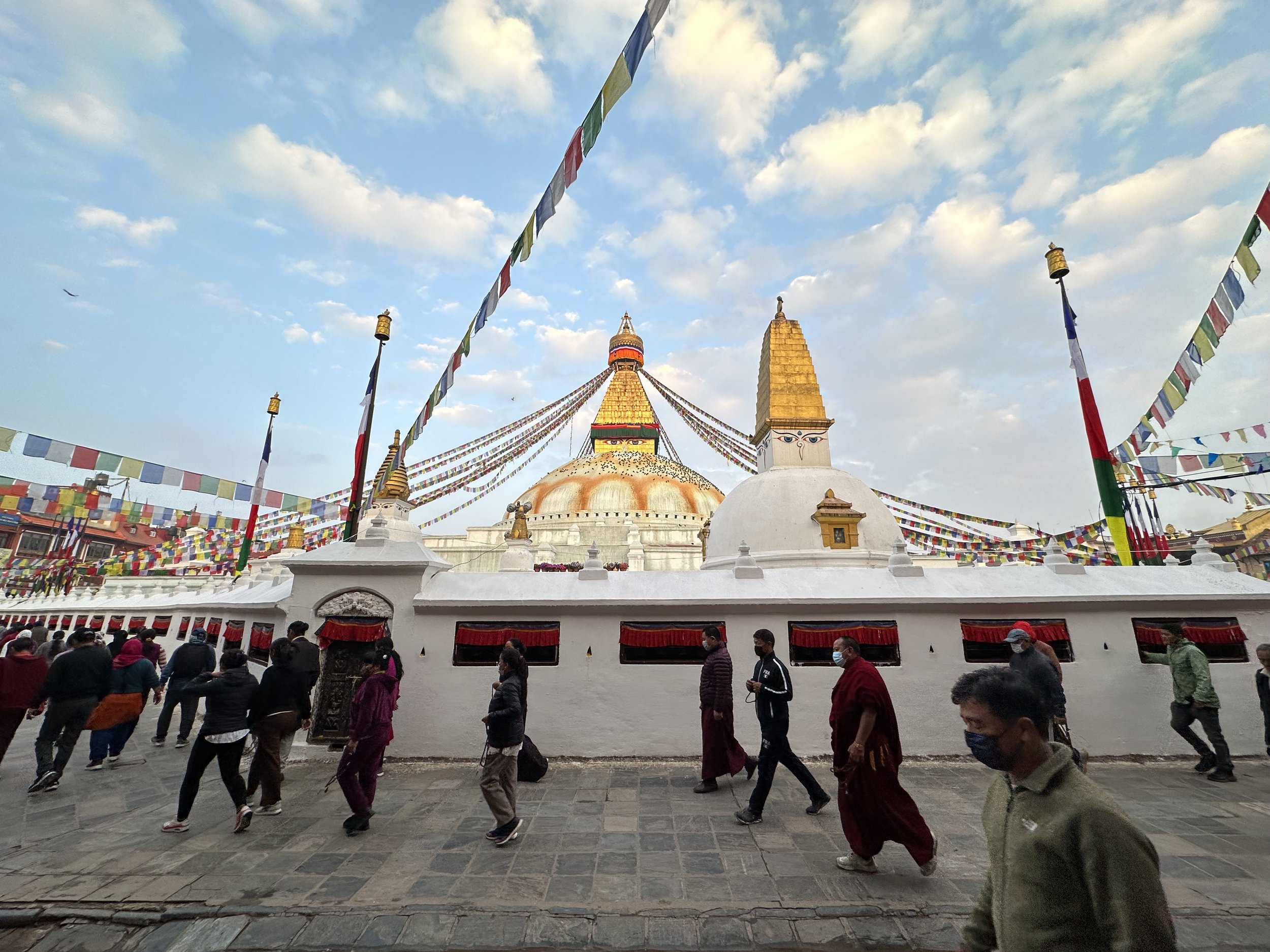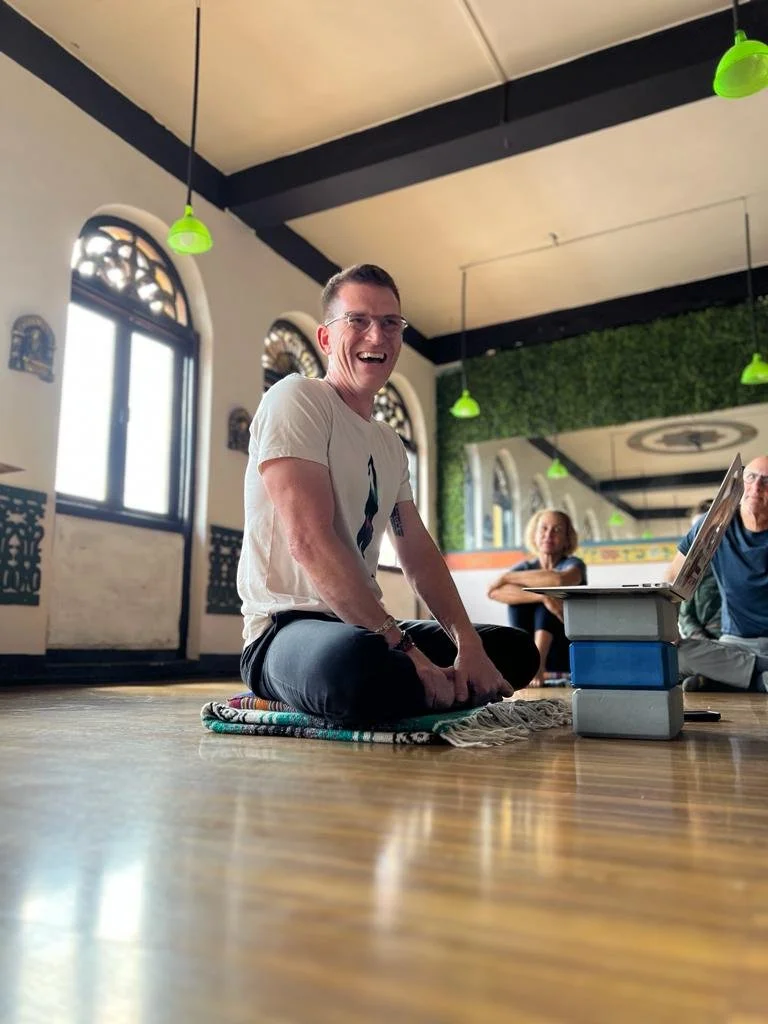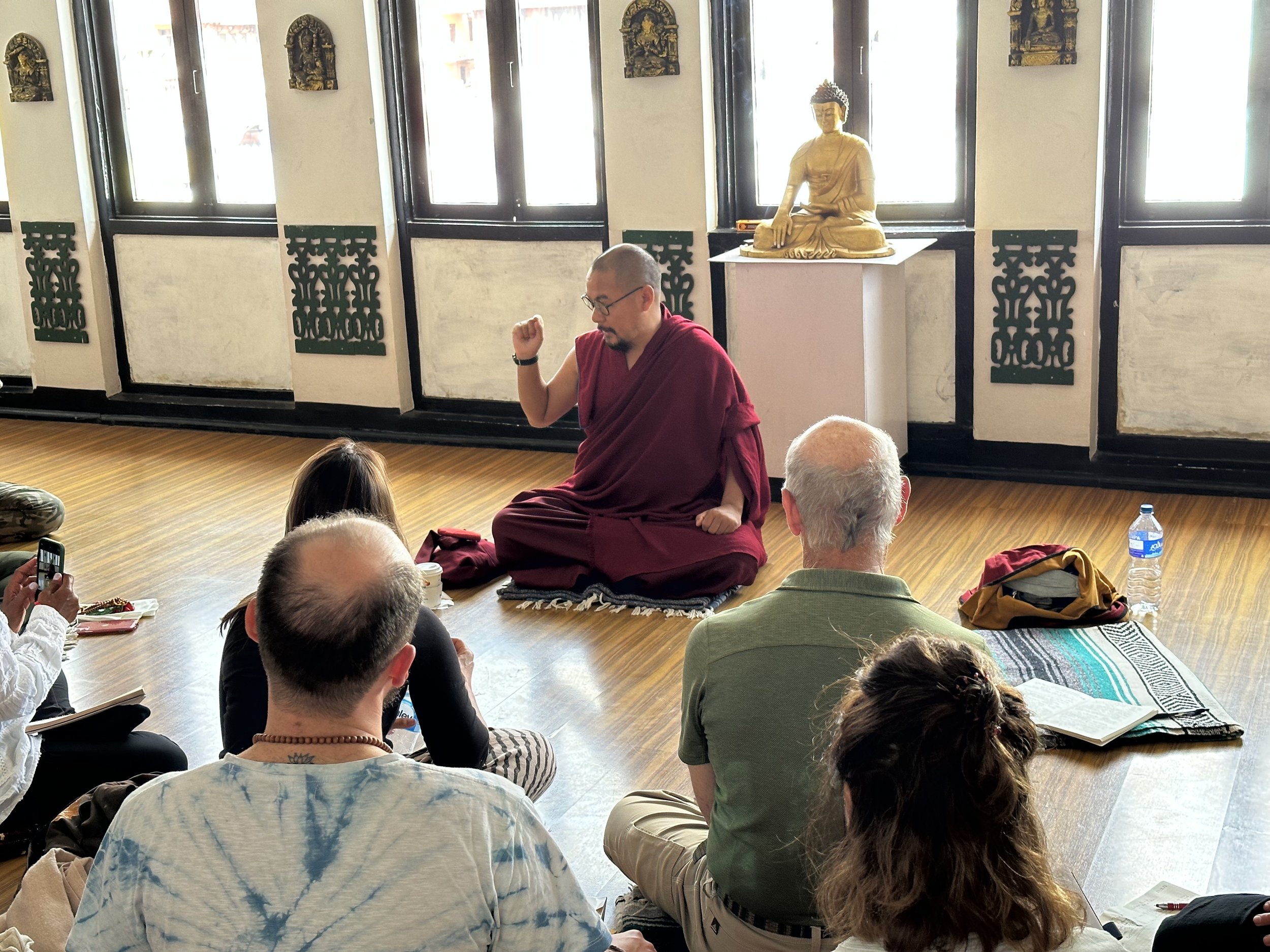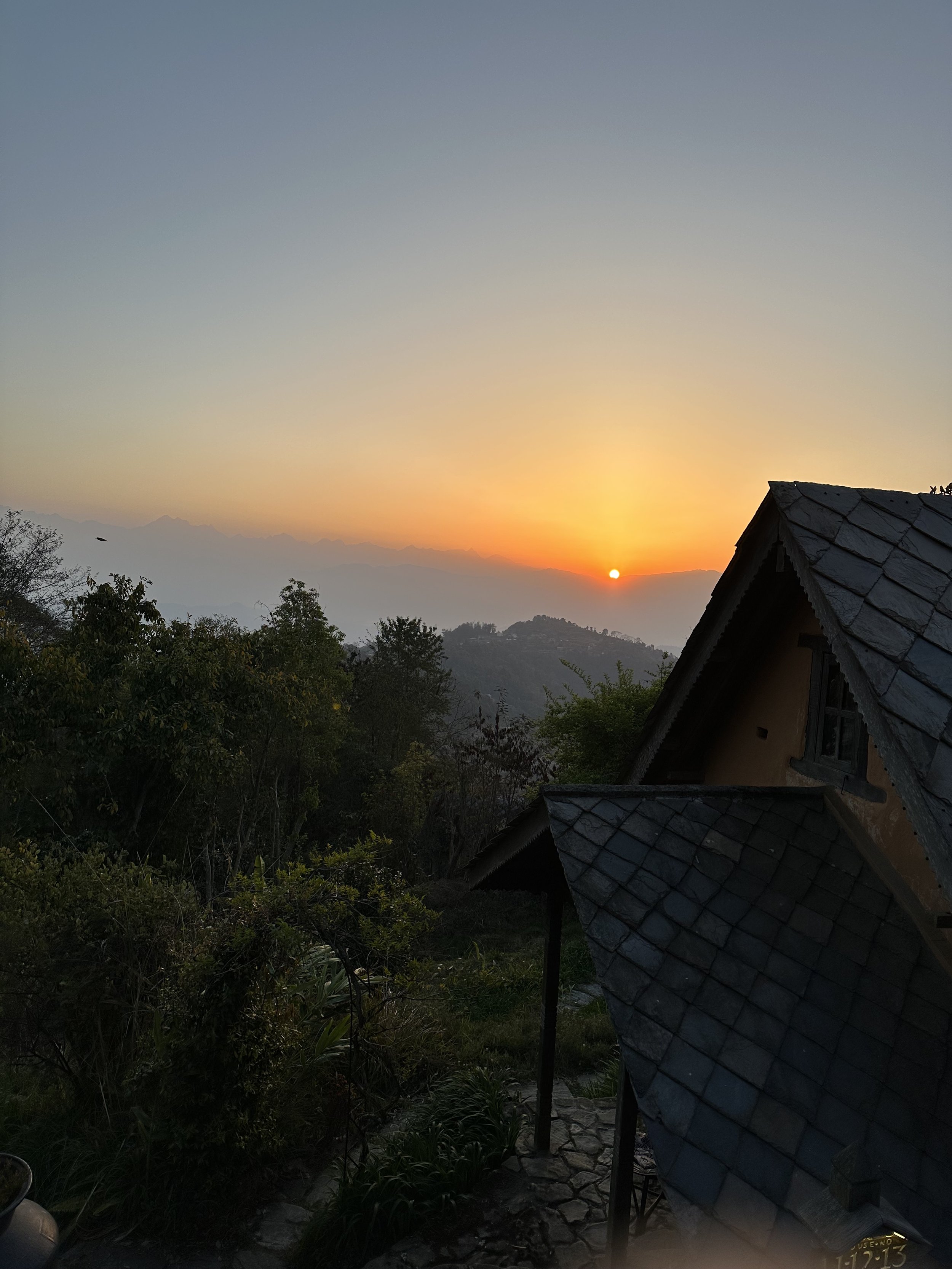
Get Enlightened While Having Fun!
Exploring the 3 Yanas of Buddhism
A Dharma Practice & Study Week
in the Kathmandu Valley
With Cory Bryant, James Hopkins & Friends
October 15-22, 2025
The Spiritual Pilgrim invites you to join us for a 7-day immersion into the teachings and practices (i.e., dharma) of Buddha Shakyamuni in the Kathmandu Valley of Nepal. After fifteen years of taking folks on pilgrimage in this magical part of the world, we have time and again witnessed the life-changing impact of practicing here and how a desire to deepen one’s understanding and dedication to the buddha dharma naturally emerges. This inspired us to design a new type of program – a pilgrimage 2.0 if you will – with a curriculum of Buddhist theory with an emphasis on furthering your meditation practice.
Yana means “vehicle” and is a term applied to the three major paths of Buddhism: Hina (foundational) yana vehicle, Maha (great) yana and Vajra (diamond) yana. While these three are generally presented and practiced as separate schools, our teachers often emphasize the importance of an understanding, as well as a deep and abiding respect, of all three.
Over the course of your time with us, we will also provide an intro to the history of Buddhism, an overview of the three yanas - including highlights of the major teachings of each, the Four Noble Truths, the 8-fold path, the four mind turnings, the four immeasurables, and the bodhisattva path with an emphasis how to take these teachings onto the path – in other words, our primary aim is to focus on enabling your practice. As part of our curriculum, we will provide access not only to power places that are deeply aligned with each tradition, but we will also be receiving teachings directly from monks and nuns along the way.
About Cory & James
-
Cory Bryant, PhD, E-RYT
FOUNDER / GUIDE
Cory has devoted much of the past decade to exploring the intersections between Ashtanga Yoga and Tibetan Buddhism. Dating back to 2002 he has studied intensively with renowned yoga masters such as David Life, Sharon Gannon, David Garrigues, Tim Miller, Tim Feldmann and Kino MacGregor, as well, as Tibetan lineage holders including Chokyi Nyima Rinpoche (with whom he took refuge) and Yongey Mingyur Rinpoche. His approach to teaching reflects not only his deep commitment to spiritual practice but also his extensive study of Yoga and Buddhism.
With a Ph.D. in Food Chemistry and a background in international food policy, Cory brings a unique perspective to his teaching, blending the precision of the scientific method with the contemplative wisdom of Buddhist philosophy. He explores the rich intersections between Buddhism and Yoga, offering an integrative approach to both practice and life.
-

James Hopkins
GUIDE
In 2004 James retired from his job as a stockbroker and checked into a Buddhist monastery near the Boudhanath stupa in Kathmandu, and has been living there ever since: Studying philosophy & language at the monastery, traveling around the world as a Tibetan lama's assistant, running a social project in an encampment of street beggars, teaching leadership & management skills to reincarnated lamas, leading international yoga tours, and trying to make sense of it all with a pen & paper.
James is the Founder/Director of Quilts for Kids Nepal - a nonprofit that puts children in need through school and provides a vocation (quilt making) to local women. A long time student of the dharma, James is an incredible story-teller and teacher.
Meditation
We’ll start each day with facilitated meditation practice guided by either Cory or James — with additional seated and walking practices offered throughout the week — including practices led by Tibetan Buddhist monks & nuns. Drawing on the teachings of Chokyi Nyima Rinpoche & Yongey Mingyur Rinpoche we will explore traditional śamatha (calm abiding) to open awareness practices.
After seated practice Cory will be introducing Gom Yoga to support the experience. Gom Yoga is a steady, grounded, meditative awareness-based guided practice that is the result of his years of practicing Jivamukti, Ashtanga and Tibetan Buddhism. “Gom” is a Tibetan word for meditation meaning “to become familiar with”. Over the years Cory has observed cognitive dissonance amongst yoga practitioners and meditators with regard to the potential of asana to be a meditative practice, as well as a huge underappreciation for the value postural practice can bring to the Buddhist path. We’ll start most days with this mindful asana practice in combination with seated and/or walking meditation practices.
Gom Yoga
After morning practice and breakfast we’ll continue exploring through a series of lecture, pilgrimage, and formal meditation practices supported by James & Cory with the support of guest teachers from Hinyana and Mahayana/Vajrayana lineages. James has been living and practicing here for over twenty years and brings an incredibly inspiring, energetic and joyful storytelling style to the mix that is sure to elevate your spirits!
Study
Buddhism is rooted in the simple idea that you can train your mind to suffer less and flourish more. In this experiential guide, Cortland Dahl will take you on a journey through the core principles and meditation practices of the Buddhist tradition. The journey begins with teachings on the Four Noble Truths, practical observations that will help you understand the causes of unhappiness, and how you can access inner calm and deep insight through meditation. The journey continues with teachings on compassion, buddha nature, and the profound principle of emptiness, before culminating in a discussion of meditation practices that use common experiences like dreams and strong emotions to awaken.
This book is an excellent resource and we’ll be using it to support the journey. Easy and engaging — Cortland does an excellent job covering the 3 yanas while offering ready-to-use guidance on how to bring the practice into your life.
The Course Text
What will I learn & practice?
History of Buddhism
Buddhism dates back nearly 2600 years and as it has moved around the world out of India (where it originated) and across Asia and even into the Western world it has adapted to the places it inhabits. We will be exploring this process and how it impacts our experience of the Buddha’s teachings.
The Four Mind Turnings
The starting point for all Buddhists is the study, contemplation and meditation on what we call the four mind turnings because the turn the mind toward the dharma (path). These four are precious human life, impermanence, karma and samsara.
The 3 Yanas
In the early years after the Buddha’s passing his students put about preserving teachings. This early work laid the foundation, which we refer to as the Hinayana (foundational vehicle). Over time this has evolved to include the addition of Mahayana and even later the Vajrayana (“great” and “diamond” vehicles). You will gain a basic understanding of all three.
The Path
The fourth noble truth introduces the 8-fold path. We will explore this path and even further move into study and practice of the Bodhisattva Path of the Mahayana schools.
The Four Noble Truths
It all began with this teaching. After his enlightenment in Bodhgaya the Buddha began to share his experience beginning with this seminal teaching that outlines how and why we continually encounter stress, suffering, and pain in life and goes on to provide the path to manage it.
Meditation
Mind training is the way. We will devote ample time each day to guidance and practice of meditation practices including shamatha (calm abiding) moving from object focused practices to open awareness as taught by our teachers, Yongey Mingyur Rinpoche.

The POWER of PLACE
The experience will be centered around two incredible power places – Boudhanath and Namo Buddha. We’ll spend the first few days in the comfort of the simple, but serene, atmosphere of the Shechen Guesthouse located on the grounds of Shechen Monastery and centered around a lovely garden with a full service cafe. Then we’ll move up to Namo Buddha Resort in the Himalayan foothills where we’ll be pampered with organic vegetarian meals sourced from produce grown there on the property and cozy cabin lodging nestled near our own lovely yoga shala.
Boudhanath Stupa
Dating back to 5th century CE this is the largest and one of the most sacred site for Tibetan Buddhists in the world. This power place is surrounded by a village of over 40,000 Tibetans and 50 active monasteries.
This will be our home base for the first leg of the trip. You’ll enjoy lodging at the Shechen Guest House - on the grounds of the magnificent Shechen Monastery, Simple, but comfortable accomodations quite near the stupa to provide support of the aim of this experience — deepening our understanding of the dharma and our ability to practice - anytime, anywhere.
Namo Buddha
Namo Buddha is the place where Buddha Shakyamuni — in his life just prior to being born Siddhartha Gautama and becoming “The Buddha” — made the ultimate selfless sacrifice. While on some sort of expedition he encountered a mother tiger and her cubs. Due to drought they were starving as she was too malnourished to produce milk to feed the cubs. So, he cut his own flesh and offered himself to the tiger who then consumed him and was able to save her cubs. Because of the magnitude of this act in this place Thrangu Rinpoche settled here after being forced out of Tibet and started Thrangu Monastery, which is now one of the largest monasteries in the valley,
Where You’ll Be Staying
Shechen Guest House
On the grounds of the majestic Shechen Monastery this lovely little guesthouse offers simplicity in a serene environment just off the stupa with it’s own full service cafe and additional tea house offering great support for our study, contemplation and meditiation!
Namo Buddha Resort
A magical place tucked away on a hilltop in the Himalayan foothills about 1.5 hours outside Kathmandu. It brings to mind the Shire of the Hobbit movies and is an excellent place to unplug and clear the mind. Home cooked veg meals cultivated mostly from their onsite organic farm.

How much does it cost?
$1550 (USD) - shared room
*Note, if you do not have a roommate we will do our best to pair you with one; however, if that’s not possible you’ll need to pay the private room rate.
$2100 (USD) - private room
*Note, Namo Buddha Resort - our hillside destination for days 7-10 - may not have enough singles, but they do have houses with upstairs/downstairs bedrooms - there is a chance you will be asked to share such a house - one up, one down, so you’ll still have private space,
Hold your spot with a $500 nonrefundable deposit.
Deadline to sign up is Sept 1, 2025.
Program Costs do not include: air fare to and from Kathmandu, airport or departure taxes not included in your air ticket, visa fees, additional hotel nights before or after scheduled program dates, unscheduled activities and excursions, soft drinks, alcohol and espresso drinks, phone calls, massage services, shopping, laundry or other personal expenses, additional meals, drinks and snacks, travel insurance, trekking/travel extensions (although we are happy to arrange for you).
The program is suitable for novice and experienced practitioners alike, we aim to make this an uplifting experience that will leave you more knowledgeable in the dharma and more inspired and prepared to take your meditation practice into your daily life!
















